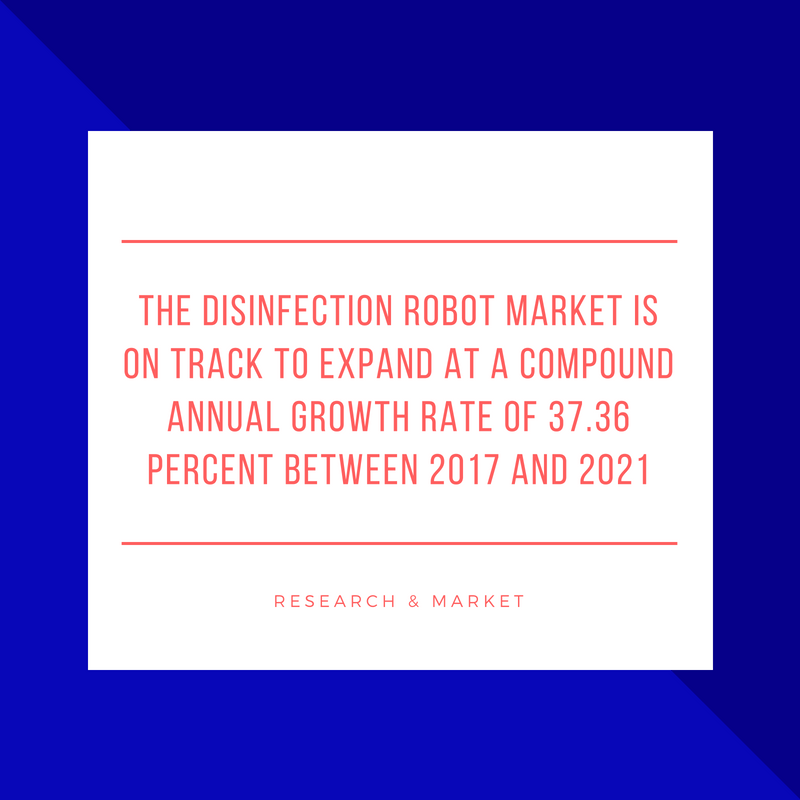The War on Germs
How Robots are Revolutionizing SterilizationWhen we think of hospitals and healthcare facilities, many tend to think about how these places are havens of cleanliness and sterility. And while this is generally a fact, according to a recent CDC report on Healthcare-Associate Infections (HAIs), “On any given day, about one in 25 hospital patients has at least one healthcare-associated infection.” Data from this statistic was collected from HAI surveillance systems, the National Healthcare Safety Network (NHSN) and the Emerging Infections Program Healthcare-Associated Infections Community-Interface (EIP HAIC). The CDC defines healthcare-associated infections as, “healthcare-associated infections (HAIs) include central line-associated bloodstream infections, catheter-associated urinary tract infections, and ventilator-associated pneumonia” and can be associated with “the devices used in medical procedures, such as catheters or ventilators.”
However, there is a burgeoning technology that can help alleviate HAIs and provide high levels of sterilization in both hospitals, EMS vehicles and medicopters, and in assisted living and extended care facilities: sterilization robots.
Sterilization robots have been created by Infection Prevention Technologies (iPT), an industry leader in microbial desensitizing devices. The company says it has built the most powerful UV light disinfection system in the world. According to its site, the The IPT™ 3200 UV disinfection robot ensures that “Clostridium difficile (C. diff), Acinetobacter and M.R.S.A., to name a few, are attacked before the next patient occupies the room.”
Using UV light disinfection, this new technology allows hospital and healthcare facilities to know that their devices, rooms and more are sterilized and safe for future use. Organizations that are currently using this technology reported, “As much as a 72% drop in Clostridium difficile (C. diff) cases, one of the most problematic HAI-causing organisms, after implementation of the IPT 3200.”
Vanderbilt University Medical Center is just one example of a healthcare organization utilizing this advanced technology to increase their sterilization processes. According to a RXE Consult article, the hospital has begun sending in sterilization robots following sterilization procedures. The process of ultraviolet radiation helps catch germs that linger after standard sterilization procedures done by humans.
While there are a few different methods of sterilization, one of the most notable disinfectant robots “kills infections on surfaces by spraying ultraviolet C-light hydrogen peroxide mist. Performing this procedure takes a significant amount of time, so it is currently used mainly for operating rooms, intensive care units and burn units.”
This technology is still growing, however, Research & Market assesses that “the disinfection robot market is on track to expand at a compound annual growth rate of 37.36 percent between 2017 and 2021” within Vanderbilt’s strategy.
While this is a technology that has not been implemented at all hospitals and healthcare facilities, there is certainly evidence that points to this becoming an effective method of sterilization. As technology evolves, this is an area that sterilization professionals are learning more and more about. A 2015 article by Futurity writes, “Currently, the system is being used in 40 Veterans Affairs hospitals across the country and about 200 private hospitals.” However, the technology continues to evolve.
Q1’s 5th Annual Medical Device Sterilization Conference on September 24-25 in Minneapolis, MN will discuss this sterilization method as well as others in a one-of-a-kind two-day conference. Network with peers and hear in-depth presentations from key industry leaders—download full program details here.






